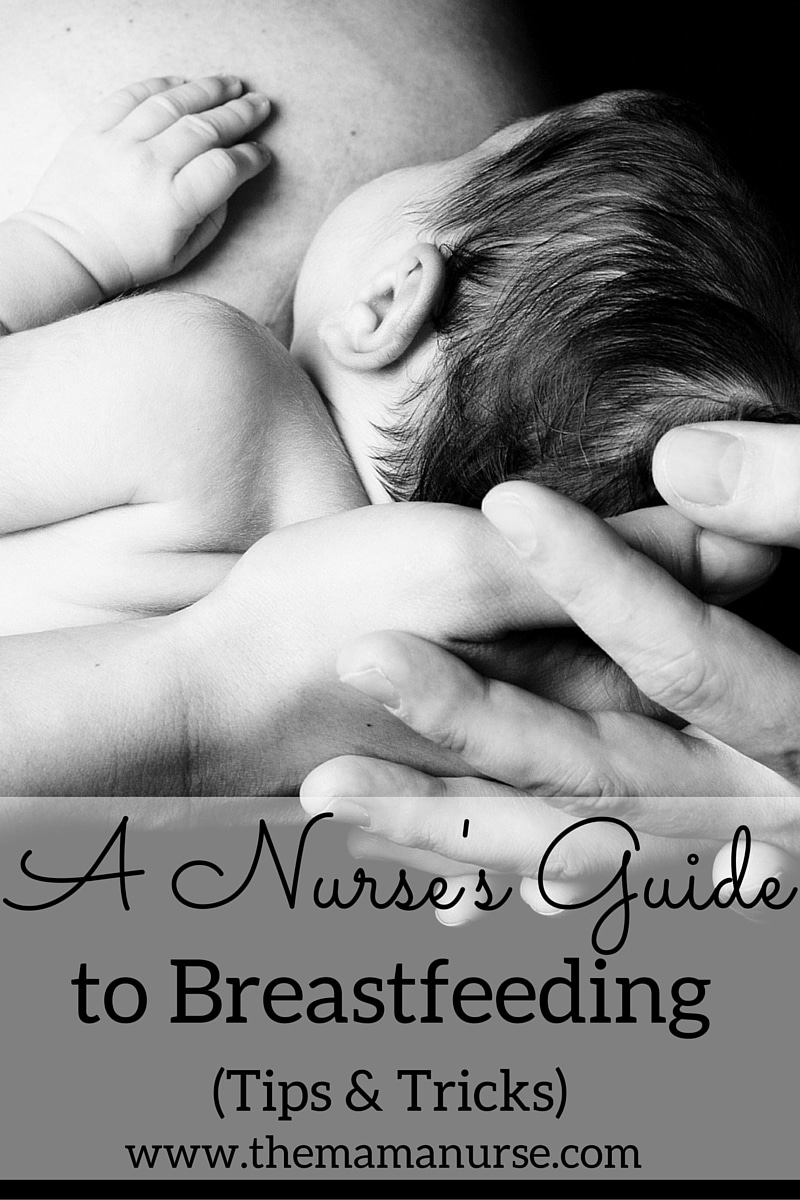Following my previous post about my personal experience with breastfeeding, I wanted to give my breastfeeding tips and tricks to moms new to breastfeeding. The following information is everything I discuss as an OB nurse with new parents immediately postpartum. I know the first 48 hours after birth is a blur and it may be hard to remember all of the health teaching we provide, so please feel free to use these breastfeeding tips throughout your baby’s breastfeeding career.
Book your online lactation consulation here
Breastfeeding Tips for New Mama’s: Feed As Soon As Possible After Birth
Newborn babies are at their most alert right after being born and have a great instinctual drive to find their mothers breast to feed. Fun fact: when placed on their mothers stomachs skin-to-skin, babies can actually move themselves up to the breast and latch on independently if given the opportunity. Regardless of how baby gets on the breast, giving baby a long feeding immediately after birth will set them up for success during the long sleep phase afterwards.
Of course this is not always possible if mom had a caesarean or there were complications with mom or baby after the birth. This can understandably be disappointing and frustrating for new moms. If this feed is missed it can make baby a little harder to wake up from his sleep, but breastfeeding is definitely still doable!
It’s All In The Positioning
There are four basic breastfeeding positions:
- Cross-cradle hold– Have baby lie sideways on your chest with his tummy turned in towards yours. When feeding on your right breast, use your left hand to support babies neck and tuck baby’s bum into the crook of your arm. Use your right hand to support and guide your breast into babies mouth and to remove suction prior to taking baby off your breast. Switch hands for the left side. This is the absolute best position when starting out as it gives you the most control of baby’s head. This can feel awkward at first but it really will give you a head start on nursing.
- Cradle hold– Have baby lie sideways on your chest with his tummy turned towards yours. When feeding on your right breast, use your right arm to cradle baby’s head chest and body into you. Make sure baby’s whole body is aligned. Switch hands for the left side. This is great for experienced moms that need to use their one hand to accomplish other tasks, like changing the channel or helping with homework. Of course you can easily switch between the cross-cradle and cradle hold as you become more comfortable.
- Football hold– Hold baby vertically facing you. When feeding baby on your right breast, bring him to your right side and hold like you would a football with your right hand supporting his neck while his body lies on a pillow beside you. This position is great to switch it up if the other two positions aren’t working for you. This is especially useful for larger chested women as it gives more control of nipple placement.
- Side-lying– This was my best friend of all the positions. When feeding on your right side, lie down on your right side and place baby on his left side facing your breast. Use your left hand to support baby’s neck while latching. This is great for all the caesarean section mamas and when you want to rest. Just make sure that no harm can come if you accidentally nod off while feeding. I would recommend doing this on the floor or in a bed where there is little risk to baby.
Time It Right
Regardless of your position, always bring baby’s head towards your breast when his mouth is open. Brushing baby’s upper lip against your nipple can initiate the rooting reflex if he isn’t opening up on his own. When his mouth is opened wide, bring baby close so he can attach to most of the areola below the nipple.
Baby’s upper and lower lips should be flanged out to prevent pinching. If you feel a pinch, do not automatically take baby off the breast as taking them on and off frequently can cause nipple pain.
With the hand not supporting your baby’s head, attempt to gently push down on baby’s lower lip so that you can easily see it is out while nursing. With some baby’s this will need to be monitored frequently as they can easily slip off. If you feel like you need fifty hands to accomplish all these things, you’re not alone. It will get easier the more you practice.
Make Sure The Latch Is Perfect
With a proper latch baby will be getting all of the colostrum or breast milk that he needs. You will see flanged lips and slow, visible jaw thrusts. There will be audible swallows, which sound like tiny puffs of air. Newborns do not have as efficient of a suck as older babies so instead of a “suck, swallow, suck, swallow” you will hear a pattern of “suck, suck, suck, pause, swallow”.
A common mistake new parents make is thinking baby is falling asleep during the pauses and taking baby off the breast. Pay close attention to your baby’s feeding pattern and allow them to take that pause before swallowing. If they are actually falling asleep at the breast (which does happen!) then keep them on and stimulate them by rubbing their feet or backs. If baby does not wake up at all it could indicate the feeding session is over. Take your free hand and “fish hook” baby’s mouth with a pinky finger to break the seal prior to taking them off.
Baby Is Feeding… Now What?
There are many different suggestions on how often to feed your baby, how long and whether to use one or both breasts. What I recommend to new moms is to always watch for baby’s hunger cues, providing baby is alert and healthy. Watch for signs of rooting (sucking on hands, opening mouth and moving side to side). One of my favourite breastfeeding tips to provide to new parents is to always try to catch baby during this stage as it is way more difficult to latch a fussy baby compared to a calm one.
Allow baby to feed on one breast for as long as they are actively sucking and swallowing. If baby latches off early, you can try to latch baby on the same breast. This will make sure that at least one breast is emptied completely each feed. Doing so will help with milk production. Also feeding a full breast will make sure baby gets both the foremilk (watery, hydrating) and hindmilk (fatty, filling).
Once baby takes himself off or is falling asleep you can burp baby then attempt the other side if baby is still rooting. A good indication that your breastfeeding attempt was successful is if baby falls asleep (after a long feed) or is content immediately after.
Ouch! I’m So Sore!
It is commonly said that if you are nursing correctly then your nipples won’t hurt. This is true if you do it correctly from the very beginning and beyond, but generally there is a learning curve at the beginning which can cause nipple pain during subsequent feedings. Be prepared to have a least a minimal amount of nipple pain so keep some pain meds at the ready. And lather on the lanolin cream! It can be applied after every feed and it is safe for baby to ingest. Expressing and applying colostrum and then air drying can help as well.
If you have bruising, bleeding or cracked nipples, baby was latched incorrectly at one point or another. Take a good look at your current latch and make sure that the issue has been corrected and get some breastfeeding tips from a lactation consultant. If there is still a concern, get help! Many moms think it is best to grin and bear it for baby but if baby isn’t latched properly then he/she will not be getting the nourishment that they require. Nipple pain is also common reason why mamas have to stop nursing, so seek help immediately if you are getting super sore.
Use The Resources
Regardless of experience it is our duty to make sure every baby is feeding well, which means we need to see baby latched and we will ask you a lot of questions. Please do not feel like we are doing so because we think you are a bad parent or that we don’t trust you. We just want you both to succeed. We know how much harder it will be for you if you are sent home before baby gets the hang of it. Save these breastfeeding tips to review again once you are at home with baby.
To avoid the dreaded well-baby checks where baby’s weight is down, he is jaundiced, your nipples are cracked or you have a plugged duct, let us help you as much as possible. Ring the call bell when you are feeding and your OB nurse will be happy to provide support and guidance! If you are having difficulty at home, there are lots of community resources such as local lactation consultants (who always get rave reviews!), La Leche League, and breastfeeding support groups. Good luck, beautiful Mamas! No matter your journey, you are a rock star! I hope these breastfeeding tips are helpful to you.





We should seriously get shirts made that say “It’s hard to latch a fussy baby” that is the TRUTH.
Definitely 😀
Thank you for this post. I requested some posts to help mamas with breastfeeding and Julie from Fab Working Mom Life recommended your post. I hope you don’t mind, but I’ve included you in the roundup. It goes live tomorrow at 8 a.m.
I am honoured thanks so much for including Ivy!
Thanks for these really invaluable pointers. Before you become a mother you imagine breastfeeding should come as a natural, but it doesn’t it takes practise which is very frustrating for some first time mothers.